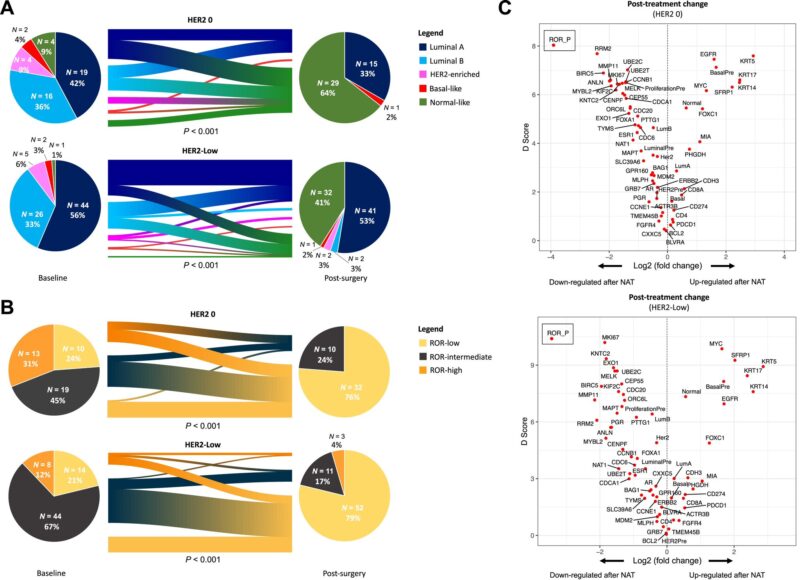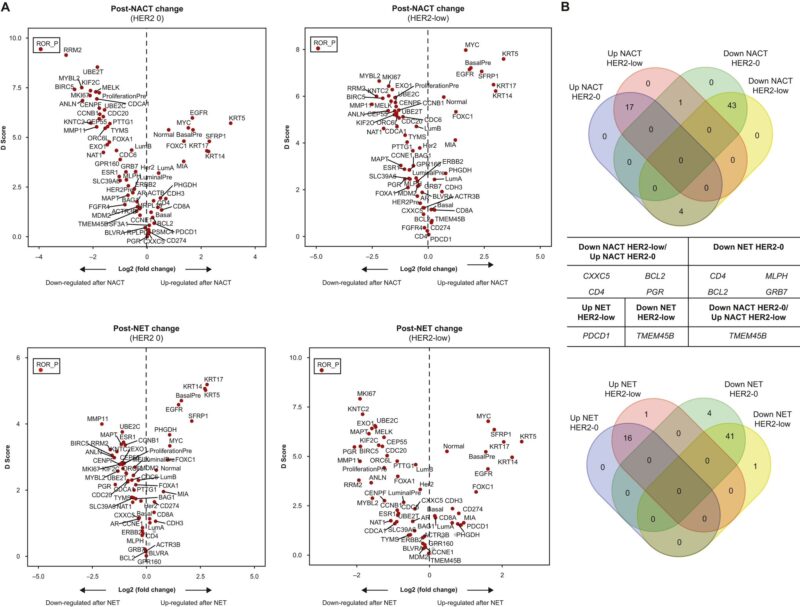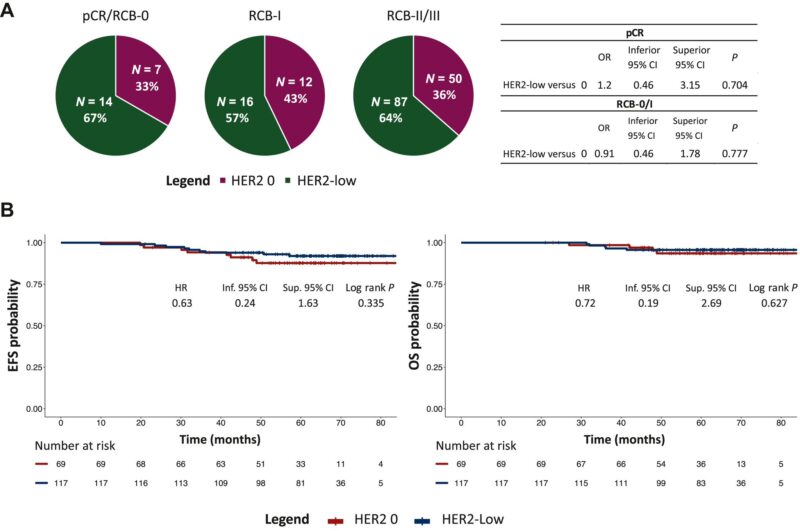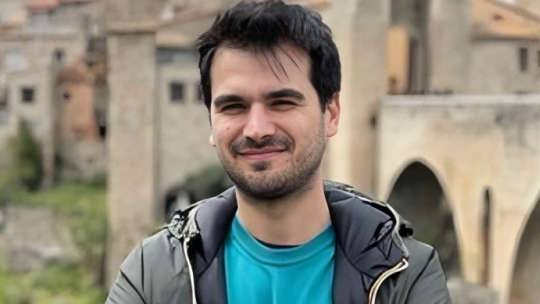Francesco Schettini, Medical Oncologist at the Breast Unit of the Hospital Clinic of Barcelona and Postdoc Researcher at the IDIBAPS, shared a post on their X:
“Super proud to share our new study unraveling the clinicopathological and molecular changes induced by neoadjuvant CT and ET in HR+/HER2-low and HER2-0 breast cancer, just published in ESMO Open.
We hereby present an analysis focused on dissecting molecular, pathologic, gene expression changes and HER2 status dynamics under NACT and NET in HR+/HER2-low versus HR+/HER2-0 tumors and their potential prognostic implications..
We included 186 patients with stage I-IIIB HR+/HER2-negative BC treated as per SOC NACT or NET at the hospital clinic:
1) 25% of HER2-0 changed to HER2-low and 34% HER2-low became HER2-0. HER2 shifts were significant after NACT, not NET, with consistent ERBB2 mRNA dynamics.

2) Similar gene expression, PAM50 intrinsic subtype and ROR-P changes were induced in HER2-0 and HER2-low BC by NACT and NET, with shift to Normal-like and Luminal A disease, ROR-P-low risk category and consistent genomic up/down regulations

Specifically, we observed a significant down-regulation of PAM50 proliferation- and luminal-related genes/signatures and an up-regulation of selected immune genes. At IHC reduction of ER, PgR and Ki67 % were induced in both HER2-0 and HER2-low, no TILs changes observed
Gene expression changes were similar regardless of neoadjuvant treatment

The % of patients achieving pCR, RCB-1 or RCB-2/3 was not dissimilar according to HER2 status, nor EFS and OS

To note, at univariate analysis, a stability in HER2 IHC status from baseline to surgery was associated with worse EFS (P = 0.003) and OS (P = 0.030) than HER2 shifts (from 0 to low or positive and from low to 0 or positive), but lost significance at the multivariable analyses
These result can help tailoring new targeted adjuvant strategies and support not relying on HER2 IHC levels in HR+/HER2-negative BC for molecular downstaging-based approaches. HER2-low-targeting should be explored to pursue more effective and/or less toxic dimensional downstaging.”
Read further.
Source: Francesco Schettini/X
